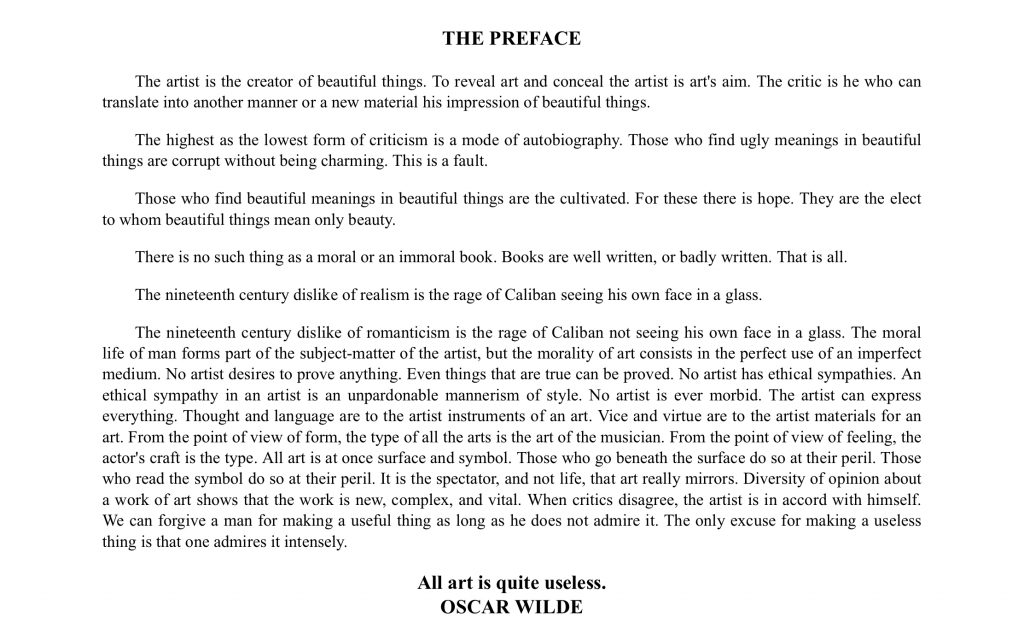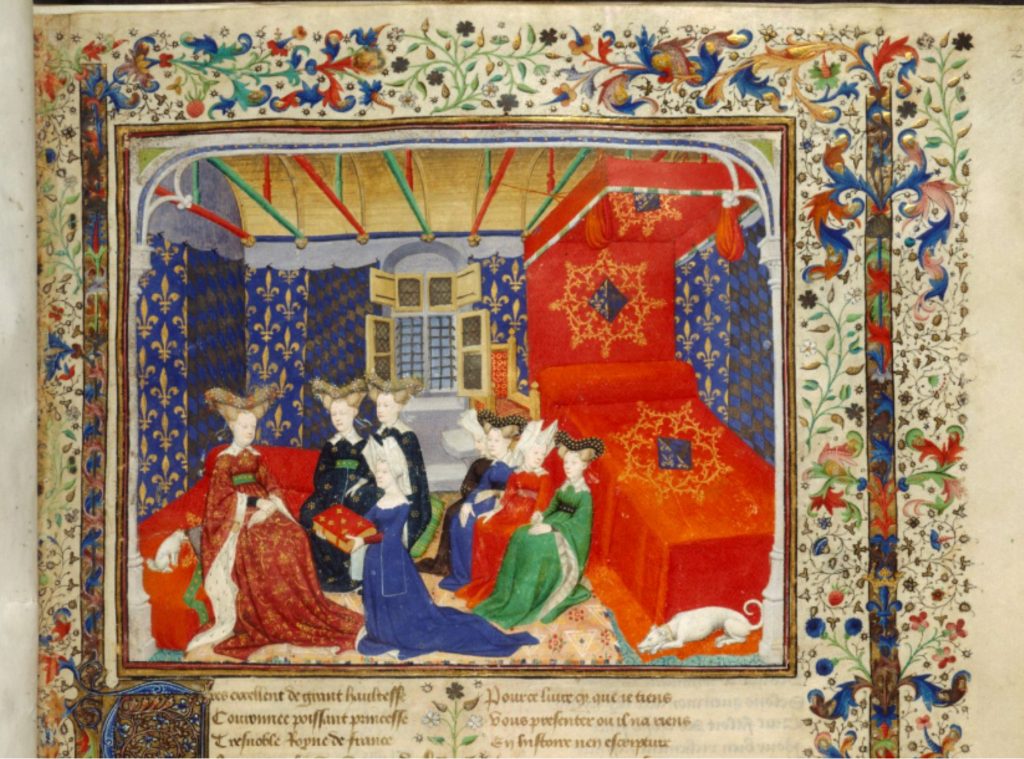Visions, mysticism, miracles, Christine de Pizan
IDEAS
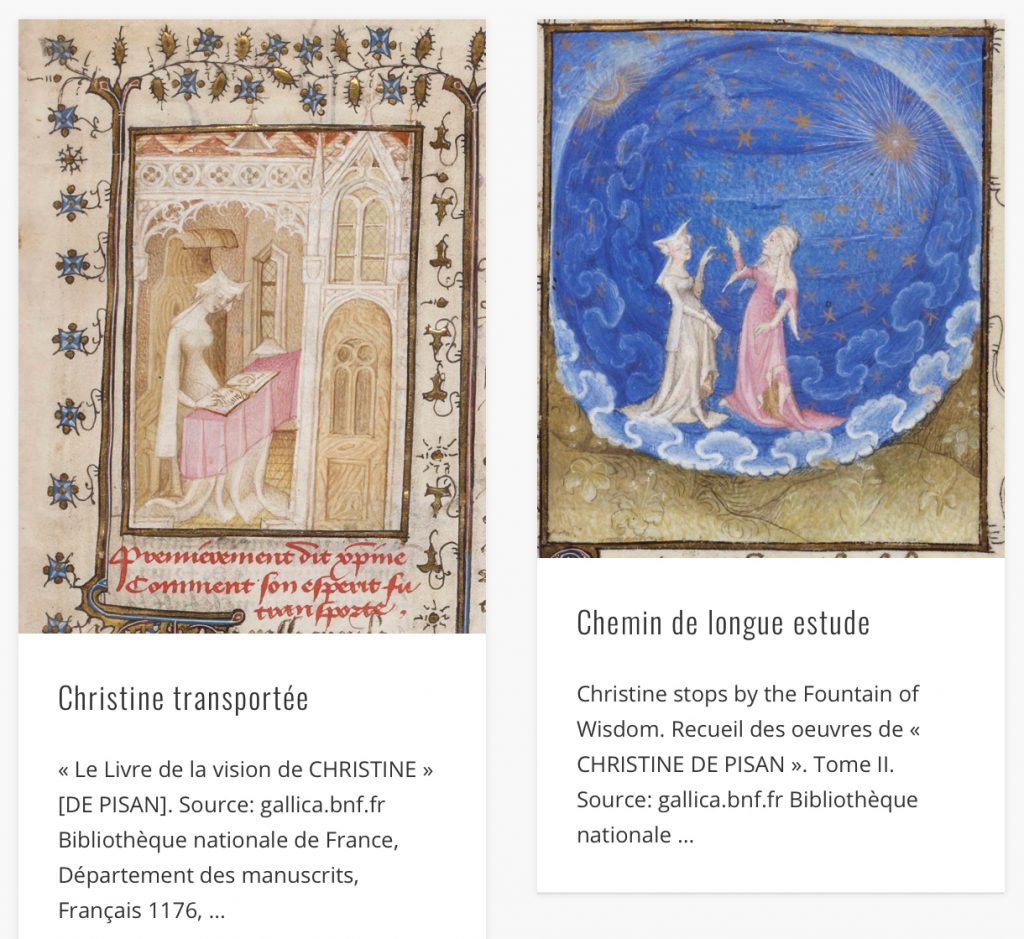
Marvel < Lat. mirari, mirabile, mirabilis > also miracle, mirror
- the moment of wonder – transport, rapture, awe-struck – and visions
- reaction, the transport of transformation, “transformative learning”
- sight as dominant sense referred to, due to immediacy (albeit not the only sense, nor necessarily restricted to it, nor just to one): wonder and marvelling are connected to seeing and vision
- mirrors, speculation, introspection, specularity (and self-knowledge), mirrors for princes, didactic material – modern example: the start of Wilde’s Picture of Dorian Gray
Christine’s visions and marvels:
- Rationale for selecting this edition (rather than just the Book of the City of Ladies)
- personal, internal, spiritual, self-writing
- visions: L’Advision Christine, BNF fr 1176 (the home MS of one of the images at the start of this post)
- contextualised via compilation in a collection of spiritual and contemplative (and disputational) writing: BNF fr 1181
- allegory and imagination (1): criticism, creativity, construction; personifications; the dream-vision of utopia and proto-speculative fiction / SF; building the City of Ladies
- parallels, analogues: Julian of Norwich, Margery Kempe, Marguerite Porete, saints and mystics, Béguines, …
- journeys and travels (internal, abstract, and/or imaginary): the idea of “transformative learning” and allegory (2); self-knowledge, examination, and learning
Image of such a voyage of self-discovery, exploration, and mapping of marvels: British Library Medieval Manuscripts Blog
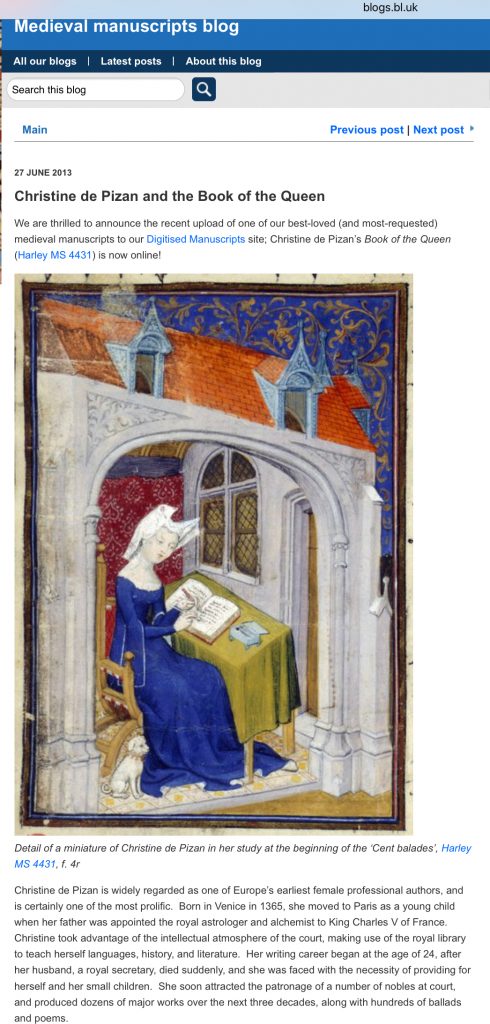
- prisons and imprisonment
- the paradoxical existence of a widow who is a professional writer at court; main “day job” work, historiography, PR / propaganda
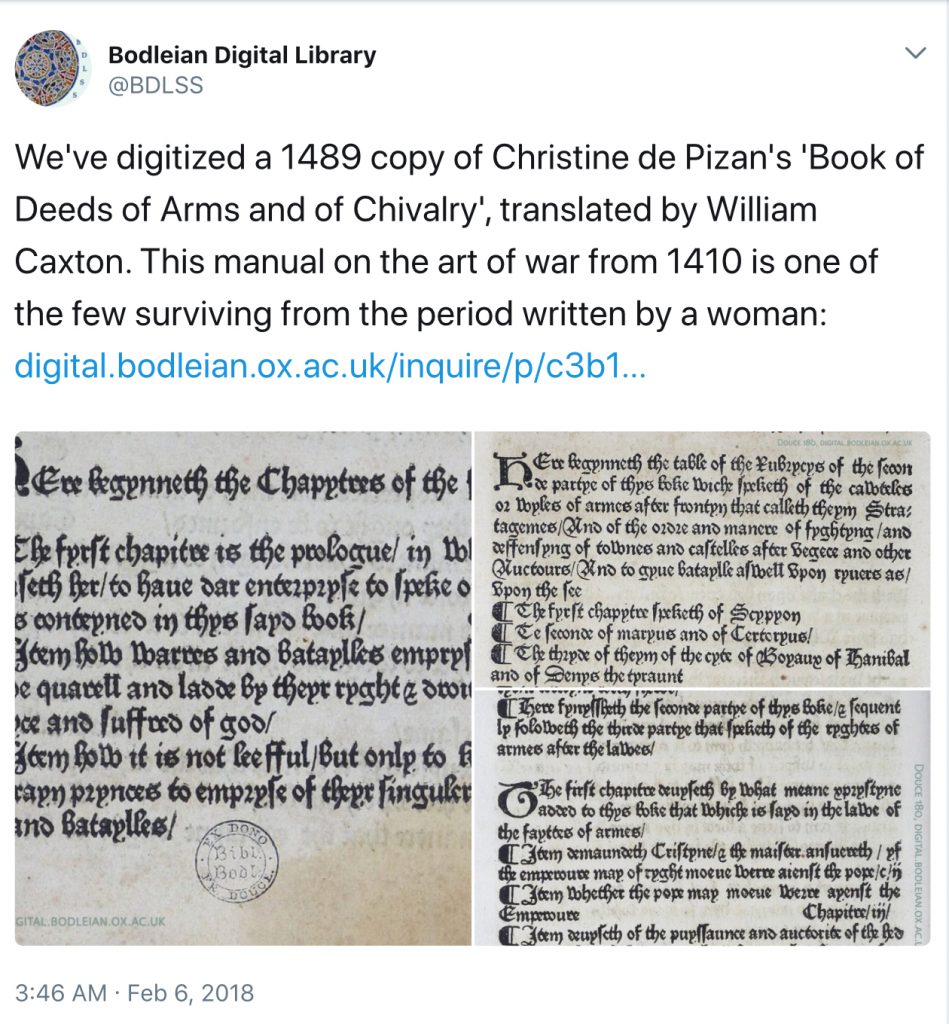
(An example of The Regular Day-Job, via the Bodleian Library, Oxford) - Service to patrons includes flattery and other courtliness, but also self-promotion, as an existence dependend on patronage entails instability. See for example the combination of artist/author and patron, in the classic pose that also iconographically recalls (in another, visual, cross-reference and intertextuality): lord and vassal (king/noble, or other relationship, justice), the Virgin Mary or other saint and humble human in prayer, supplicants offering gifts (political, diplomatic, the three wise men, a prospective lover, etc.):
- the paradoxical existence of a widow who is a professional writer at court; main “day job” work, historiography, PR / propaganda
- imprisonment and consolation: Boethius and Jean de Meun
- prisons, pathways, and poetry
visual and metaphorical models:
—the linear, inc. paths, choosing your route and turnings, and forking paths; the related idea of “adventure” in travel < ad + venire, to come to somewhere (where the point and interest is the route taken)
—the complex linear: labyrinths, mazes, Borges
—the circular: a circularity in many forms of lyric poetry, song, and dance that can result in repeated recycling, entrapment, returning to the same point of departure: ex. ballades, rondeaux, and Fortune’s wheel
—alternatives and ways out that include the potential for change: fixed forms with infinite potential for movement and creativity within them:
(1) Dante’s terza rima (14th c.; and Arnaut Daniel’s sestina, 12th c. Occitan; AD appears in Dante’s Purgatory XXVI)
(2) the sonnet (16th c. + 13th c. Occitan/Sicilian/Tuscan/Italian predecessors: Giacomo da Lentini, Guittoni d’Arezzo, Lanfranchi da Pistoia, Guido Cavalcanti; the latter was also a contemporary & friend of Dante and also appears in Purgatory (XI): all roads lead back to and around and about Dante… )
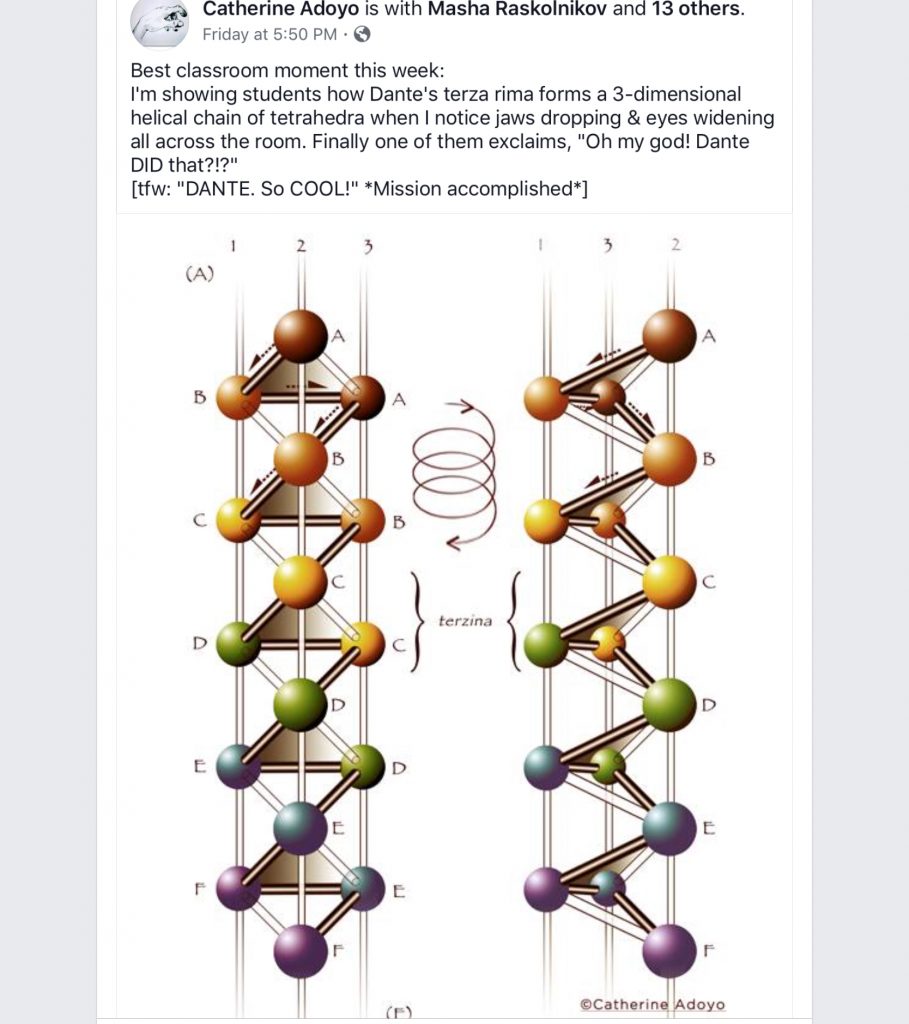
TUESDAY
Start: some answers to questions arising from comments:
- Christine de Pizan’s background, education, sources and resources
- the literary genres of the Category of Women, exemplary collections (inc. for men—ex. Boccaccio De Casibus virorum illustrium—for humans generally, for paths of virtue and towards goodness and where it, in turn, leads to in the afterlife), didactic and specular (and speculative and introspective) writing
- Ex. Hesiod, Boccaccio Decameron & De Mulieribus claris, Chaucer Legend of Good Women,
- feminism and / or / as anti-misogyny: questions about the use and abuse of anachronistic terminology and concepts, and flipping them around: comparative readings, medievalisms (plural), and reading and questioning contemporary concepts and terminology in the light of earlier ideas. See essays in second part of our text, and other work by the same scholars, and Maureen Quilligan, The Allegory of Female Authority: Christine de Pizan’s Cite des Dames (1991)
- another feminist problem: the kinds and range of examples: including traditional roles, the valorisation / valuing of “women’s” work and crafts (ex. textiles)
- bearing in mind that much writing is anonymous, and—especially in the case of religious, devotional compositions—not necessarily obviously gendered by modern conventional norms, or more complicatedly, or not at all: feminised or neutral known male poets, inter- and trans-gender voices, saints and religious (monks, nuns) and mystical marriages with Christ or the Virgin Mary
- some common ground: ideas of access and equity; the idea of parity and of being a peer
- reception and reading: how Christine de Pizan is written (inc. by her), preserved, collected, transmitted: Schoenberg Database of Manuscripts (University of Pennsylvania), 148 MS and counting…
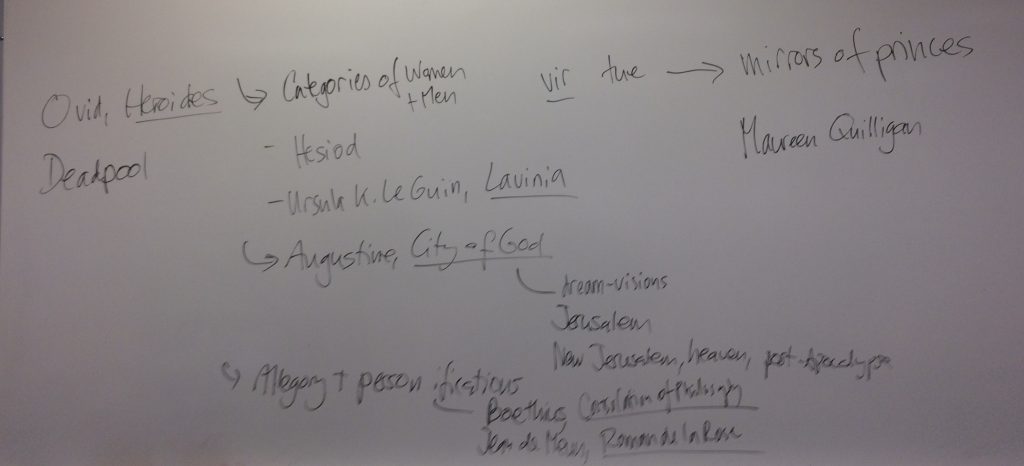
THURSDAY
- Places and spaces: the idea of a “place of mind”
- one particular space: the garden (presentation: Anne)
- the Book of the City of Ladies
- British Library Harley MS 4431
- Introduction: British Library Medieval Manuscripts Blog
- and another shorter introduction, to the Book of the City of Ladies, BL again
- background: a virtual pilgrimage “Pilgrim Libraries: books and reading on the medieval routes to Rome and Jerusalem” research project (dir. Anthony Bale, Birkbeck College, University of London)
- extras (JO’B to bring in books): Christine de Pizan political writings, the Roman de la Rose debate, lyric poetry
